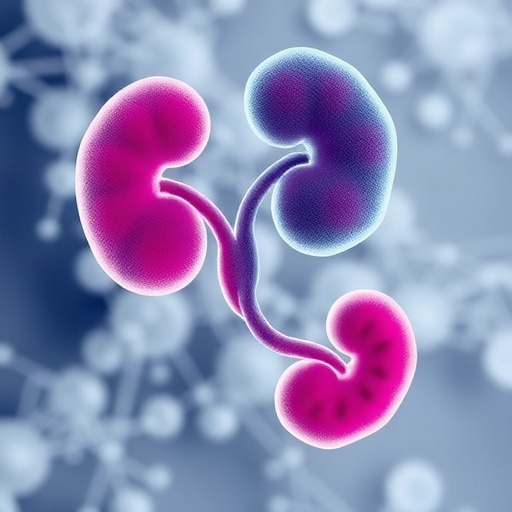Immunoglobulin A Nephropathy (IgAN) has garnered significant attention in recent years due to its increasing prevalence and complexity in clinical presentation. This kidney disease, characterized by the deposition of IgA in the mesangial region of the glomeruli, presents unique challenges in terms of both diagnosis and treatment. Recent research has made strides in identifying and validating surrogate endpoints that could potentially streamline the assessment of treatment efficacy and guide clinical decision-making.
The pivotal role of surrogate endpoints in clinical trials cannot be overstated. These endpoints are critical measures that serve as substitutes for direct outcomes of interest, such as morbidity or mortality. In the context of IgAN, the identification of reliable surrogate endpoints can enhance research efforts and contribute to the faster approval of therapeutic options. This becomes especially important in a landscape where traditional clinical outcomes can take years to manifest, thereby hindering the progress of clinical research and the development of new therapies.
A systematic literature review recently conducted by Lorenzi and colleagues dives deep into the intricate relationship between surrogate endpoints and actual clinical outcomes in patients with IgAN. Their comprehensive analysis takes into account various studies, methodologies, and results, aiming to clarify the predictive value of these surrogate markers. The findings hold great promise for both clinicians and researchers, as they outline the potential pathways through which surrogate endpoints can influence therapeutic strategies.
.adsslot_Y0zp7G4vob{ width:728px !important; height:90px !important; }
@media (max-width:1199px) { .adsslot_Y0zp7G4vob{ width:468px !important; height:60px !important; } }
@media (max-width:767px) { .adsslot_Y0zp7G4vob{ width:320px !important; height:50px !important; } }
ADVERTISEMENT
One of the major points of consideration highlighted in the literature review is the importance of proteinuria as a surrogate endpoint in IgAN studies. Proteinuria, or the presence of excess protein in urine, has been historically correlated with disease progression and renal impairment. As a biomarker, its levels can provide valuable insights into the effectiveness of pharmacological interventions. However, the review nuances this perspective, elucidating that while proteinuria is a significant indicator, it should not be the sole determinant of therapy success.
Moreover, the evolution of methodologies used in assessing surrogate endpoints is another enlightening aspect of this research. The classical clinical trial framework has shifted towards more sophisticated statistical models and biomarker strategies that integrate genomics and proteomics. Such advancements allow for a more tailored approach to treatment models, fostering the understanding of individual patient variability.
The systematic review also emphasizes the need for standardization in the reporting of surrogate endpoints across different studies. Inconsistent methodologies can lead to discrepancies in results and hinder the comparability of data. Therefore, establishing clear definitions and guidelines will be pivotal for future research, assisting in bridging the gap between clinical trials and clinical practice.
Another compelling factor identified in the review is the role of patient-reported outcomes (PROs). These subjective measures capture the patient’s perspective on their health condition and the effectiveness of treatment from their viewpoint. PROs have become vital in assessing the impact of IgAN on patient quality of life, reinforcing the need for a holistic evaluation approach. The integration of PROs as surrogate endpoints can facilitate a comprehensive understanding of treatment effects beyond traditional clinical metrics.
The interplay of these surrogate markers with clinical outcomes also brings to light the importance of long-term follow-up studies. The review suggests that while short-term studies can provide insight into immediate treatment effects, long-term data is essential for drawing conclusions about chronic conditions like IgAN. Tracking patient outcomes over extended durations will yield valuable data on the sustainability of treatment benefits.
As new therapeutics continue to emerge, understanding their implications through the lens of surrogate endpoints becomes increasingly critical. Immunotherapies and novel medications targeting pathways involved in IgAN are at the forefront of research efforts. However, balancing innovation with safety and efficacy must remain a priority. The integration of surrogate endpoints into clinical trial design will help address potential safety concerns more proactively.
Furthermore, the review outlines the compelling need for cross-functional collaborations in IgAN research. Bringing together nephrologists, immunologists, biostatisticians, and patient advocacy groups can foster a more collaborative approach to research. Such an alliance will enhance our capacity to validate surrogate endpoints, ultimately leading to better patient outcomes through refined treatment strategies.
Despite the promising findings, challenges remain in the quest for reliable surrogate endpoints. The variability in disease presentation and progression among patients makes it difficult to create a one-size-fits-all approach. Additionally, external factors such as comorbidities and demographic differences might also influence the applicability of certain surrogate markers. Addressing these concerns through rigorous research and diverse patient populations will be critical for advancing the field.
In conclusion, the systematic literature review on surrogate endpoints in IgAN opens new avenues for understanding how these markers can bridge the gap between research findings and clinical applications. By recognizing the significance of proteinuria, patient-reported outcomes, and the evolution of methodologies, researchers and clinicians can move toward a more integrated approach to managing and treating IgAN. Ultimately, the goal is to improve patient outcomes through more targeted and personalized therapies, ushering in a new era of care for individuals affected by this complex disease.
The implications of this study are tremendous, offering a clearer trajectory for future research and clinical practice. By fortifying the relationship between surrogate endpoints and clinical outcomes, we can enhance the speed and efficacy of new treatment modalities, ensuring that patients with IgAN receive the best possible care. This comprehensive review serves as a reminder that while the journey toward finding definitive treatments is complex, the collective effort of the scientific community can yield tangible benefits for those impacted by immunoglobulin A nephropathy.
Subject of Research: Association Between Surrogate Endpoints and Clinical Outcomes in Immunoglobulin A Nephropathy
Article Title: Association Between Surrogate Endpoints and Clinical Outcomes in Immunoglobulin A Nephropathy: A Systematic Literature Review
Article References: Lorenzi, M., Ali, S.N., Cadarette, S. et al. Association Between Surrogate Endpoints and Clinical Outcomes in Immunoglobulin A Nephropathy: A Systematic Literature Review. Adv Ther (2025). https://doi.org/10.1007/s12325-025-03331-3
Image Credits: AI Generated
DOI:
Keywords: Immunoglobulin A Nephropathy, Surrogate Endpoints, Clinical Outcomes, Systematic Literature Review, Proteinuria, Patient-Reported Outcomes, Clinical Trials.
Tags: advancements in kidney disease researchchallenges in IgAN diagnosisclinical decision-making in IgANclinical trial design in IgANIgA Nephropathy treatment outcomesIgAN clinical research methodologiesimmunoglobulin A nephropathy researchmorbidity and mortality measures in IgANpredictive value of surrogate endpointssurrogate endpoints in kidney diseasesystematic literature review on IgANtherapeutic options for IgA nephropathy





